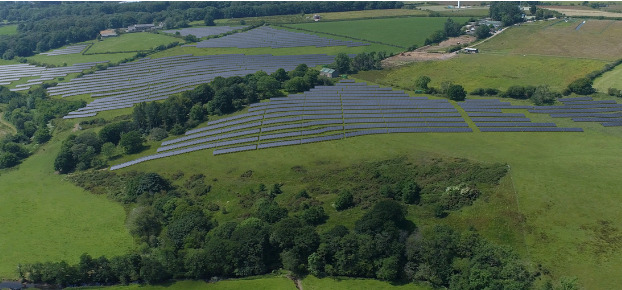
The solar farm is to power Lancaster University’s Bailrigg campus. Image: Lancaster University
A 16.5MW solar farm to be built on land owned by Lancaster University as part of the university's goals of becoming net zero for utility-based energy emissions by 2030 has been granted planning permission.
The university submitted the planning application for the solar farm in October 2021. The solar farm – which is to include 36,000 panels – is to be installed on land which has previously provided grazing land and open countryside, with the electricity generated to be used to power the university’s Bailrigg campus.
The 1.75 metre high, dual-facing panels will be arranged in rows 8.7 metres in length with three metre gaps between each row. The panels will then be connected to a series of small inverter stations and a substation that will be clad in stone and slate to fit with the surrounding environment.
The university said that during the consultation phase there were some concerns raised around glare from the solar panels, in particular in relation to the nearby M6 motorway. Assessments of the glare concluded that M6 road users would not experience reflections, however, due to the distance, landform, hedges and trees.
Paul Morris, director of capital projects and estate development at Lancaster University, said the university is already the highest producer of renewable energy of all UK universities.
“The solar farm will reduce our ‘scope 1 & 2’ emissions further, seeing a reduction of our utility related emissions by more than 40%, which is a critical strategic step in our drive for net zero.”
Lancaster University has also previously conducted research into impacts of solar farms on biodiversity. Late last year, research from the university found that changes to the way solar PV land in the UK is managed could see sites support four times as many bumble bees, while in 2019 the univeristy launched the Solar Park Impacts on Ecosystem Services (SPIES) tool alongside York University.
The SPIES tool is able to show the effect of different management strategies on ecosystem service provision and identify management actions to enhance ecosystem services.
The plans for the new 16.5MW solar farm include a landscaping scheme to enhance the hedgerows and woodland of the site it is to be built on, protecting views from local walkers and creating an environment that will support wildlife and increase biodiversity.
The land is also to be used by a collaborative initiative between the university and Students’ Union dubbed Green Lancaster, which is to engage with staff and students on sustainability focused projects and activities. The Green Lancaster team has therefore been involved with the project at various points throughout the planning phase, and has secured new sites to develop woodland and maintain natural habitats, all aimed at making use of the land around the solar farm.

